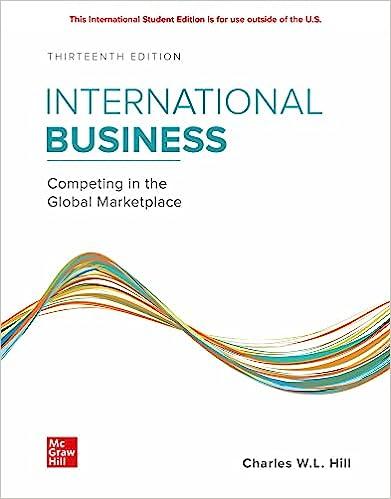In 2012, a free trade deal between the United States and South Korea went into effect. In
Question:
Given Trump’s opposition to the free trade deal, it was no surprise when, in January 2018, the U.S. announced it was entering into negotiations with South Korea to revise the terms of the agreement. Complicating matters were two factors. First, in early March 2018, the Trump administration placed a 25 percent tariff on imports of steel. As the thirdlargest supplier of foreign steel to the United States, these tariffs threatened to harm the South Korean steel industry.
Moreover, the global tariffs were technically in violation of the World Trade Organization treaty, to which both the United States and South Korea were signatories. Second, South Korea is an important U.S. ally. The country’s support was crucial in putting pressure on North Korea to halt its nuclear weapons program. Given this, many observers wondered why the Trump administration was pressuring South Korea at a time when it needed to work together with the nation to keep North Korea in check.
Perhaps because of geopolitical considerations, the negotiations proceeded very quickly. Trade in automobiles was central to the negotiations, because the Trump administration saw it as a primary cause of the trade deficit. In 2017, the United States imported nearly $16 billion worth of South Korean passenger cars, but exported only $1.5 billion worth to South Korea. Significant automobile production in the U.S. is concentrated in swing states such as Michigan and Ohio,
which helped elect Trump to the presidency.
In late March, the two countries announced they had reached a revised deal. Under the terms of this deal, South Korea would be exempt from the 25 percent tariff on steel imports into the United States. Instead, South Korea agreed to a quota that would limit its steel exports to the U.S. to about 70 percent of what they had been in 2017.
In return, South Korea made two concessions. First, the deal extended for 20 years a 25 percent tariff on exports of South Korean light trucks to the United States (under the original agreement, the 25 percent tariff was set to expire in 2021). This will likely be a significant boon to U.S. auto manufactures, because the light truck segment is one that they dominate. Second, the Koreans agreed to lift their annual quota on imports of U.S. cars into the country from 25,000 per manufacturer to 50,000 per manufacturer. Beyond that, U.S. cars sold in South Korea would have to adhere to Korea’s stringent safety and environmental standards, which the Trump administration has characterized as “burdensome regulations” designed to make it difficult for U.S. companies to sell vehicles in Korea. That being said, the reality is that U.S. auto companies were not even close to reaching the old quota limit of 25,000 cars a year, so lifting the cap may be primarily symbolic.
Questions
1. Why do you think the Obama administration pursued a trade deal with Korea in 2012? What were the potential economic and political benefits? What were the potential costs?
2. Is there any evidence that the 2012 free trade deal between the United States and South Korea was a “job killer” as claimed by President Trump?
3. What were the motivations of the Trump administration in renegotiating the 2012 deal?
4. Who benefits from the revised (2018) deal? Who might lose? Does the 2018 deal represent an improvement over that ratified in 2012?
Step by Step Answer:

ISE International Business Competing In The Global Marketplace
ISBN: 9781260575866
13th International Edition
Authors: Charles Hill





